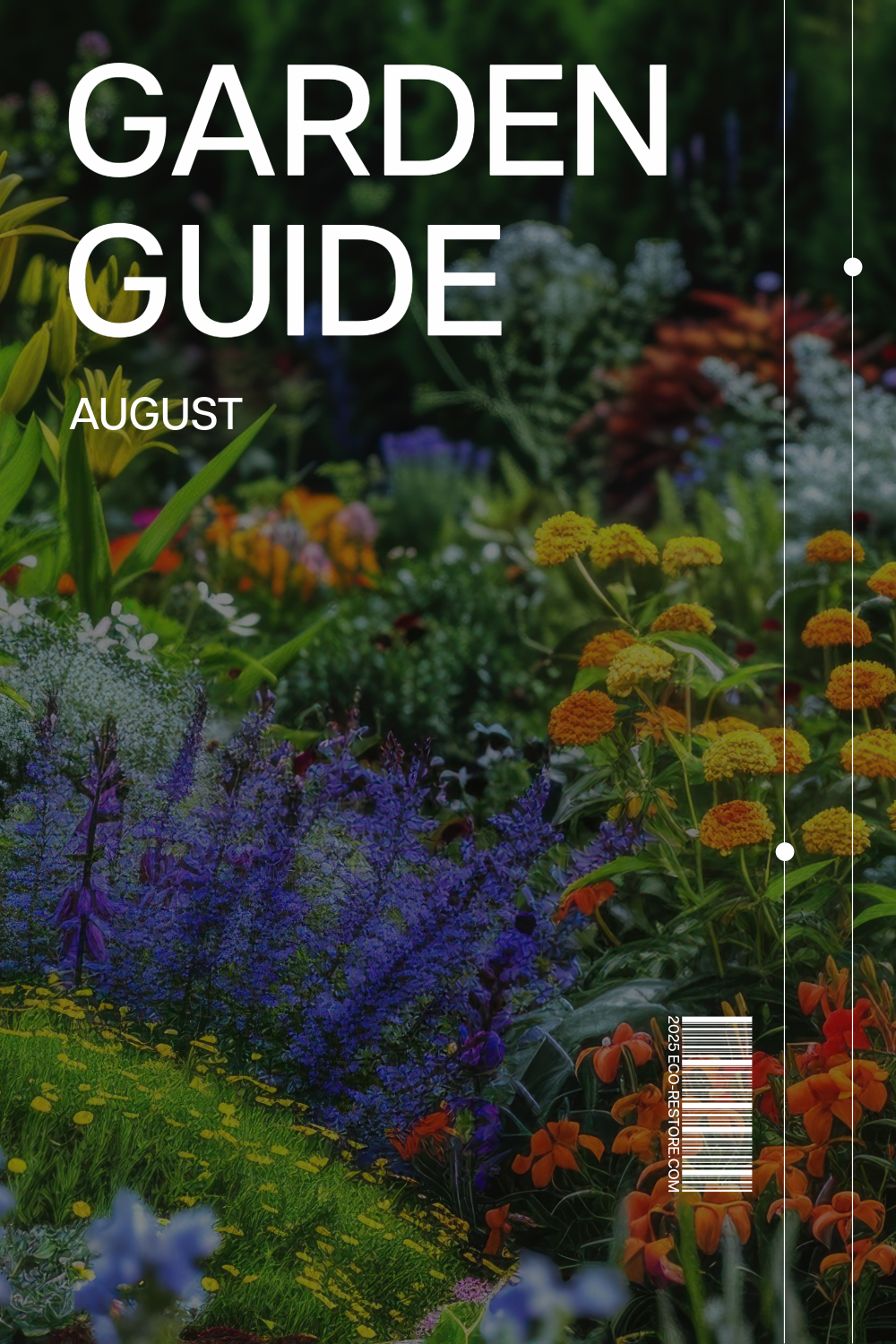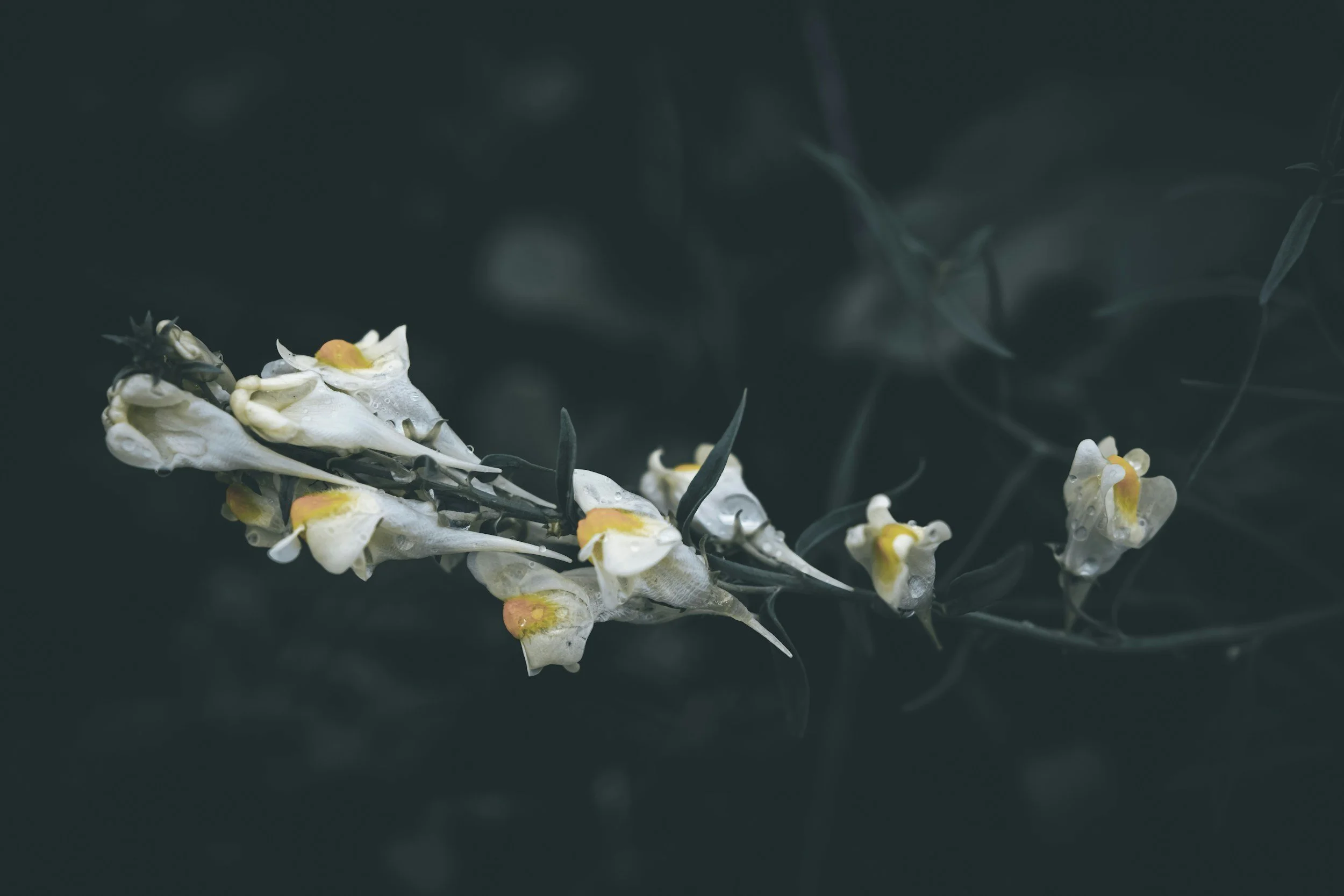The Heart of Fall
A Contemplative Journey into the Second Spring
As the warm breath of summer begins to soften and the light lingers a little lower on the horizon, a quiet shift unfolds in the garden. August in the Maritime Northwest brings a rare and beautiful phenomenon—our second spring.
The heavy lifting of summer may not yet be over, but nature begins to exhale. The sharp heat of July mellows. Cool morning dew returns. And if you pause to listen—really listen—you might notice that the rhythm of the garden changes. It's slower, deeper, more receptive. It’s in this stillness that the invitation for fall gardening arises.
This is the season to sow with intention. To plant not just for harvest, but for continuity. While others are winding down their gardens, we begin again.
A Time to Sow
August is the gardener’s bridge between abundance and rest. It’s a time to pause and ask:
What do I still long to grow?
How might my fall garden nourish me—physically, emotionally, spiritually?
What beauty could unfold if I let the seasons overlap, rather than divide?
Fall crops—particularly greens and roots—thrive in the cool, moist reprieve of September and October. Sown now, they offer sustenance just when the body begins to crave earthier meals and the spirit seeks grounding.
Picture a jade tapestry of lettuces and mustards, dotted with ruby stems and ruffled edges. A salad bowl pulled straight from the garden. With a bit of shelter, these same greens may grace your table well into November—or beyond.
If that vision entices you, start by sowing early. Seeds want moisture and attention in these waning days of summer. Fortunately, the task is easier now than it was a month ago. The air has softened. The earth cools at night. The promise of rain begins to glimmer on the edge of thought.
To prepare your seed bed, mix equal parts compost with soil and cover seeds gently—no more than 2 to 3 times their thickness. Water tenderly. If you’re juggling summer’s busyness, a cover of burlap that will remain damp a little longer can help hold the moisture in place until sprouts appear. Just lift it away once your seedlings emerge.
A Garden of Gratitude
On August 1, we reach Lammas—also called Lughnasadh (pronounced Loo-nah-sah). This sun-drenched cross-quarter day celebrates grain ripening in the fields, the turning of light, and the sacred act of bread-baking. Both festivals honor the fruits of our labor and the moment when summer quietly begins its surrender.
This is the season of full fields and tired hands. A time to bake bread in gratitude, to reflect on what has grown, and to offer thanks not from fear of the coming dark, but in honor of what has come before it. In ancient traditions, the first loaf was baked from the new grain and either blessed, broken among loved ones, or returned to the earth as an offering—a gesture of humility and deep connection between land, labor, and spirit.
What, then, might we honor in our own gardens today?
You don’t need wheat to celebrate. Perhaps your harvest is in tomatoes or calendula petals, in time spent with a loved one outdoors, or in finally seeing your garden as a sanctuary rather than a to-do list. Maybe your harvest is more internal—a lesson learned, a perspective shifted, a rhythm reclaimed.
This time of year, we’re invited to ask:
What am I harvesting—not just in vegetables, but in wisdom, rest, or resilience?
What might it mean to bake or break bread in gratitude—for myself, for others, for the earth?
How can I share the fruits of my labor, or sow the next season with generosity and grace?
We pause with our hands full. We look out across our own patch of earth—however big or small—and we whisper a thank you into the grain, the soil, the work, the sun. Nothing grows without gratitude.
This is the heart of the fall garden.
August Planting Guide
Vegetables and Herbs
Plant these throughout the month for fall harvest and winter resilience. Add a cloche in October to extend your season:
Sow Throughout August
Beet Family
Beets
Spinach
Swiss Chard
Carrot Family
Carrots
Chervil
Cilantro
Mustard Family
Broccoli Raab
Chinese Cabbage
Collards
Garden Cress
Kale
Radishes
Daikon (early August)
Turnip Greens
Onion Family
Onions
Scallions
Sunflower Family
Endive
Escarole
Lettuce
Radicchio
Sow Late August
As the weather cools, this is the moment to begin overwintering greens:
Beet Family
Spinach
Mustard Family
Arugula
Asian Greens
Cabbage
Mustards
Purslane Family
Miner’s Lettuce
Sunflower Family
Shungiku
Valerian Family
Corn Salad (Mâche)
Flowers to Sow Outdoors
The secret joy of August is that it’s not too late for beauty. Many annuals will bloom before frost if sowed now, while others lay roots for next spring. Don’t forget to save your seeds from spent flowers for future harvests!
Sow Early August
For fall bloom or early establishment:
Boraginaceae
Lacy Phacelia
Ranunculaceae
Delphinium
Love-in-a-Mist
Apiaceae
Alpine Sea Holly
Bishop’s Weed
Corn Parsley
Masterwort
Queen Anne’s Lace
White Lace Flower
Geraniaceae
Meadow Cranesbill
Gramineae
Quaking Grass
Iridaceae
Saffron Crocus (bulbs)
Malvaceae
Mallow
Solanaceae
Butterfly Flower
Plantaginaceae
Toadflax
Papaveraceae
Breadseed Poppy
California Poppy
Compositae
Bachelor’s Buttons
Dipsacaceae
Crimson Scabiosa
Mourningbride
How Eco-Restore Can Help
At Eco-Restore, we honor this quiet turning of the year. Whether you’re dreaming of a vibrant fall kitchen garden, building soil with cover crops, or seeking a deeper connection to the land you steward, we’re here to support your journey.
Our seasonal Garden Visits can help you:
Identify what to plant now based on your microclimate
Improve soil conditions for fall success
Plan a cloche or cold frame setup
Add pollinator-friendly blooms for autumn interest
Reflect on what’s thriving—and what wants to evolve
Let’s connect in a free discovery call to step into the second spring together—tending not just plants, but purpose.
What will you sow in this season of stillness and transformation?








